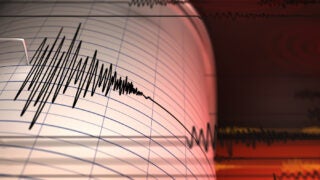New laboratory earthquake model links real contact area to earthquake dynamics, opening a new pathway for earthquake prediction and early warning systems.
Earthquakes
News Listing
The exercise — the largest emergency preparedness drill in the country — has its roots at the USC-based Statewide California Earthquake Center.
USC and SCEC experts are available for interviews on earthquakes, in topics ranging from the physics underlying Earth movements to the financial fallout from natural disasters.
USC Dornsife’s Sylvain Barbot discusses why his new study forces researchers to rethink the fundamental basis of the fault mechanics used in forecasting the seismic activity of earthquakes.
The USC-based Statewide California Earthquake Center developed CyberShake, a computational platform that simulates hundreds of thousands of earthquakes to calculate regional seismic hazard models.
Researchers at the USC-based Statewide California Earthquake Center contributed models that forecast earthquake ruptures for the U.S. Geological Survey’s National Seismic Hazard Model.
The worldwide Great ShakeOut drill originated in 2008 at USC, which serves as home base for the influential Statewide California Earthquake Center.
Ahead of Thursday’s Great ShakeOut drill, the director of the USC-based Statewide California Earthquake Center discusses its expanding role.
An analysis of historical seismic events by a USC Dornsife scientist helps explain why large tsunamis still occur after relatively small earthquakes.
The Southern California Earthquake Center at USC Dornsife is deploying high-performance computers, sensors and other high-tech gadgets to better prepare Californians for severe seismic activity.










